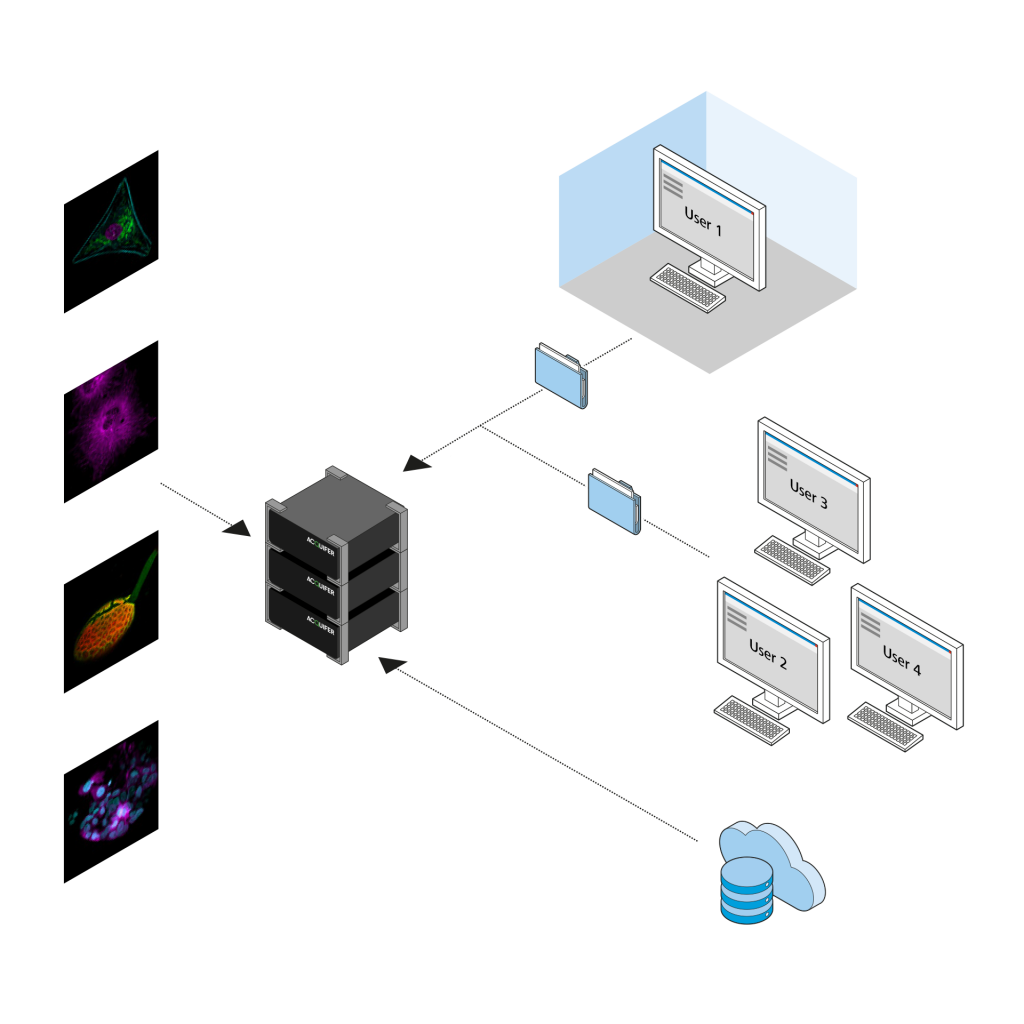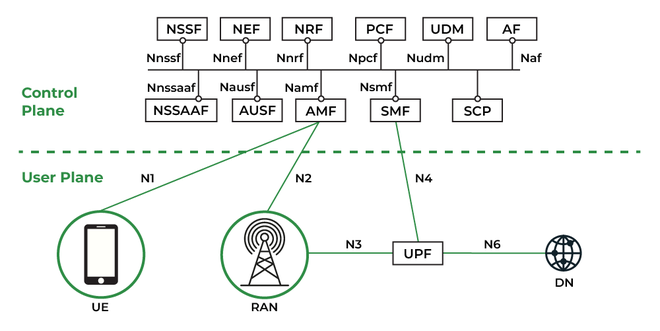A Computer Network Architect designs and builds data communication networks, such as local area networks (LANs), wide area networks (WANs), and intranets. They ensure the connectivity of IT infrastructure supports the organization’s goals.
Delving into the world of computer network architecture, these professionals carry a significant responsibility in the digital framework of a business. By considering both hardware and software components, a network architect crafts the backbone that facilitates internal and external communication processes.
By doing so, they optimize network performance, security, and scalability to meet the evolving demands of the company. With an eye on the future, they also anticipate emerging trends and technologies, guaranteeing that the network grows in alignment with technological advancements. Their role is pivotal for businesses aiming to operate efficiently in an increasingly connected world.

Credit: www.zeiss.com
The Role Of A Computer Network Architect
Computer network architects are like city planners of the digital world.
They design and build data communication networks. These networks can range from small connections to vast cloud infrastructures. Network architects ensure that we can share information quickly and securely.
Primary Responsibilities
These professionals have a long list of important tasks. Let’s dive into the key ones:
- Analyze business requirements for data communication systems.
- Create plans for the network’s layout and design.
- Select hardware and software to build the network.
- Implement security measures to protect the network.
- Update data networks for optimal performance and future growth.
Designing Network Infrastructure
Designing a network requires a sharp eye for detail and deep technical knowledge. Here’s what network architects do:
- Pick tools and equipment to build the network’s backbone.
- Sketch out network diagrams to show plans visually.
- Test systems before they go live to ensure they work well.
- Consider the future growth of the business to make the network scalable.
Ensuring Data Security And Connectivity
Securing a network is a top priority. Network architects must:
- Install firewalls and encryption software.
- Monitor for potential security breaches.
- Develop recovery procedures for network outages and attacks.
- Keep the network’s software updated and patched.
- Train users on proper security practices.
Skills And Qualifications
Stepping into the digital battleground of network architectures requires a certain skill set that goes beyond general computer knowledge. Computer network architects are the visionaries of the virtual infrastructure domain, determining the most efficient electronic communication layouts. Let’s explore the skills and educational background these professionals often possess.
Essential Technical Skills
Being a network architect isn’t just about being savvy with computers. It’s about mastering a suite of technical proficiencies that allow these experts to design and implement complex network solutions. Here are the core technical skills:
- Understanding network structures: from LAN, MAN, and WAN to more advanced configurations.
- Proficiency in IT: including hardware, software, and cloud infrastructures.
- Robust knowledge of security measures and disaster recovery planning.
- Capability with network modeling: including use of state-of-the-art software tools.
Soft Skills For Effective Communication
No architect stands alone in the construction of a network. They need to possess soft skills to ensure ideas are conveyed and executed smoothly:
- Leadership qualities: to guide teams and drive projects.
- Problem-solving skills: to troubleshoot any issues that arise.
- Excellent communication: crucial for coordinating with clients and team members.
- Attention to detail: for overseeing intricate network designs.
Educational Credentials And Certifications
Formal education and certifications boost a network architect’s qualifications. Here’s what many employers look for:
- Bachelor’s degree in Computer Science, Information Technology, or related field.
- Master’s degree for higher-level positions (optional but beneficial).
- Certifications such as CCNA, CCNP, or CISSP highlight specialized expertise.
Certifications prove ongoing education and a commitment to staying current in the field.
Daily Workflow
Computer Network Architects play a crucial role in shaping the digital backbone of businesses. They envision and build the networks that support internal and external communication. Their daily workflow is a series of meticulous and strategic steps, ensuring every aspect of the network is optimized for performance, reliability, and security.
Analyzing Business Requirements
The day starts with a close analysis of business needs. To tailor a network that supports these requirements, network architects review:
- Company size and layout
- Data usage and storage needs
- Security protocols
Developing And Testing Network Systems
Designing the network infrastructure is a core task. Network architects:
- Select appropriate hardware and software.
- Sketch out network diagrams.
- Plan the installation of network components.
They run simulations using specialized software to test network performance under various conditions.
Collaborating With It Teams
Building a network is not a solo task. Network architects work closely with:
| Team | Role |
|---|---|
| IT Support Staff | Address technical issues |
| Security Analysts | Fortify network defenses |
This synergy ensures systems are reliable and secure.
Industry Evolution And Adaptation
Computer network architects constantly face new challenges. They ensure networks run smoothly and efficiently. Technology never stands still. Neither do the professionals who design and implement network infrastructure. They must adapt to changes within the industry.
Staying Ahead With Emerging Technologies
Computer network architects keep abreast of new technologies. Their role involves:
- Researching latest trends
- Testing new equipment
- Planning network upgrades
They integrate advancements like 5G, IoT, and AI. This keeps networks cutting-edge and efficient.
Adapting To Changing Security Threats
Network security shifts daily. Architects respond with:
- Continuous learning
- Implementing robust protocols
- Updating security measures
They protect data against new vulnerabilities. Cybersecurity is a top priority.
Impact Of Cloud Computing
Cloud computing has transformed networks. Network architects now:
- Manage cloud migrations
- Coordinate with service providers
- Optimize cloud solutions
This transition brings scalability and flexibility to organizations. They rely on cloud expertise.
Design Considerations And Challenges
Diving into the world of computer network architecture unveils numerous design considerations and challenges. Network architects face the task of creating blueprints for complex systems. These structures must provide seamless communication across various devices and platforms. The complexity doesn’t just stem from technical specifications. It also arises from the need to balance performance, cost, and regulatory requirements.
Scale And Complexity In Network Design
Building a network involves intricate planning. Think of it as constructing a city from scratch. Every road, building, and service must work together. Now, apply this to data highways. Networks can range from small offices to globe-spanning internet providers. Network architects analyze current and future needs. They make sure the system can grow.
- Anticipate traffic volume: More users mean more data.
- Consider device types: Phones, computers, and IoT devices connect differently.
- Account for geography: Networks can span buildings, cities, or continents.
Balancing Performance And Cost
Speed kills but in the world of networks, slow speed is the real killer. Fast, reliable networks are not cheap. Master architects find the sweet spot. They ensure robust performance without breaking the bank. Many factors play a part:
| Performance Factor | Cost Factor |
|---|---|
| Bandwidth capacity | Hardware quality |
| Data transmission rates | Software licenses |
| Network latency | Maintenance expenses |
Compliance And Regulatory Issues
Computers don’t operate in a law-free space. Network architects must follow strict rules. These rules protect data and privacy. They shape network structures all over. Architects must stay up-to-date. They ensure networks comply with legal standards.
- Understand global regulations: Laws differ from country to country.
- Implement security protocols: Users’ data needs protection from threats.
- User accessibility requirements: Ensure equal access for all users.
Credit: www.strongdm.com
Project Management And Implementation
Within the dynamic field of computer network architecture, project management stands as a pillar of success. Network architects wear the project manager’s hat, steering complex plans from vision to reality. This requires a clear understanding of the full project lifecycle, precise budgeting, efficient resource allocation, and the agility to navigate through unexpected hurdles during implementation.
Phases Of Network Project Lifecycle
Project management is all about structure and sequence. The phases of a network project lifecycle provide this framework. They keep tasks on track and goals in sight. Major phases include initiation, planning, execution, monitoring, and closure. Each phase comes with specific objectives and critical milestones.
Initiation – It’s where we define the project’s purpose.
Planning – Involves designing the network and mapping out the path ahead.
Execution – This is when the network gets built.
Monitoring – We check progress and make sure everything is on the right path.
Closure – The final step, where we review and hand over the network.
Budgeting And Resource Allocation
Every project hangs on a budget and the way resources are spread out. Without a tight budget and smart allocation, projects can falter. Network architects draft a budget that balances costs with project requirements. They make sure every dollar has a purpose. Then, they align teams, tools, and tech to the project’s needs.
- Analyze Costs: Know all the expenses upfront.
- Allocation: Put resources where they are needed most.
- Flexibility: Be prepared to adjust as costs change.
Overcoming Implementation Obstacles
Implementation is the acid test of project management. Obstacles are inevitable, but the true skill lies in overcoming them. Network architects plan for these challenges. They employ creativity, technical knowledge, and expertise to solve problems fast. The goal is to keep the project moving smoothly towards completion.
| Obstacle Type | Strategic Actions |
|---|---|
| Technical Issues | Troubleshoot and adapt technical plans |
| Resource Shortages | Reassess and optimize resource usage |
| Timeline Delays | Revise schedules and expedite processes |
Network Maintenance And Troubleshooting
Computer Network Architects play a crucial role in maintaining the lifeline of a company’s IT infrastructure. They ensure that communication networks are in top-notch condition. They focus on a range of tasks from routine checks to responding to sudden malfunctions, as well as upgrading components for better performance.
Routine Network Health Checks
Conducting regular health checks is vital for any network’s longevity. These preventative measures help identify potential issues before they become major problems.
- Assess server performance
- Inspect data backups
- Monitor security threats
Responding To Technical Issues
Troubleshooting is all about quick and efficient problem-solving. Network Architects are always ready to tackle both minor hiccups and major outages.
- Identify the issue
- Analyze causes
- Implement fixes
Upgrading Network Components
Staying up-to-date with technology is non-negotiable. Upgrading components is necessary to boost network capacity and to integrate new features.
| Component | Reason for Upgrade | Expected Outcome |
|---|---|---|
| Routers | Enhanced speed | Quicker data transfer |
| Switches | More connectivity | Expand network reach |
| Firewalls | Stronger security | Reduced risk of breaches |
Future Prospects In Network Architecture
The world of computer network architecture is ever-evolving. As the backbone of digital communication, networks require advanced infrastructure and innovative minds. With the rise of new technologies, network architects face an exciting future, brimming with opportunities and groundbreaking developments.
Innovations On The Horizon
Network architecture stands at the cusp of transformative change. The coming years promise to deliver advancements that will redefine connectivity:
- 5G Networks: Faster speeds and lower latency.
- Quantum Networking: High-level security through quantum cryptography.
- Software-Defined Networking (SDN): Networks adapt and manage traffic efficiently.
The Increasing Role Of Ai
Artificial Intelligence (AI) will play a pivotal role in future networks:
| AI Application | Impact |
|---|---|
| Network Optimization | AI algorithms will enhance data flow and reduce bottlenecks. |
| Security | Continuous monitoring and instant threat detection by AI. |
| Automation | Simplified management through intelligent automation. |
Career Growth And Opportunities
With technology advancing, so do the career prospects for network architects. Look out for:
- Increased demand for skilled professionals in evolving network infrastructures.
- Opportunities for specialization in emerging tech like IoT and Edge Computing.
- Leadership roles in managing complex, large-scale networking projects.
Growth in this field is not only inevitable, it’s already happening, signaling ample career trajectories for aspiring network architects.
Credit: www.qsfptek.com
Frequently Asked Questions Of What Does A Computer Network Architect Do
What Is A Computer Network Architect?
A Computer Network Architect designs and builds data communication networks. These range from small connections to vast cloud infrastructures. They ensure efficient and secure data flow.
What Qualifications Do Network Architects Need?
Network Architects typically need a bachelor’s degree in computer science, information systems, engineering, or a related field. Relevant experience and certifications can also be important.
How Much Do Network Architects Earn?
Salaries for Network Architects vary widely based on experience, location, and company size. According to BLS, the median pay in 2020 was about $116,780 per year.
What Skills Are Essential For Network Architects?
Essential skills include strong analytical abilities, expertise in network hardware and software, knowledge of cybersecurity practices, and excellent problem-solving capabilities.
Conclusion
Embarking on a career as a computer network architect blends creativity with technical expertise. These professionals shape the backbone of digital communication by designing robust networks. If you’re passionate about innovation and connectivity, this role could be your career calling – ensuring data flows seamlessly in our interconnected world.













































Leave a Reply